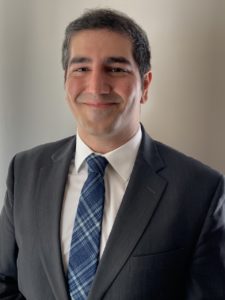
At first there was chaos. Then came adaptation and recognition of what was coming down the pipe—followed by assimilation into a new kind of order. Now that much of the U.S. healthcare community is coming to terms with the effects of the COVID-19 pandemic, for a speciality of the nature of vascular surgery, further rounds of sorting and re-organization are taking shape as so-called elective case backlogs re-enter the fray.
Amit Chawla, MD, chief of vascular surgery at the New Orleans Veterans Affairs Medical Center and an assistant professor of surgery at Louisiana State University, has been mired in the thick of what that process looks like on the ground in one of the country’s coronavirus pressure points.
“We’re on the tail end of this in terms of thinking about when to re-open,” Chawla tells Vascular Specialist, just as New Orleans is entering a new phase on the pandemic timeline. On the frontline, that means taking into consideration “what exactly we should do first,” he says, “being cognizant of the fact that we share ICUs [intensive care units] with a whole bunch of other services.”
As far as New Orleans goes, Chawla has a fairly wide frame of reference. He works across a slew of hospital settings, including the VA, the main LSU academic medical center and the children’s hospital.
From a mid-March starting point, the coming reality of COVID-19 set the stage for what he and his colleagues were about to work through. “A lot of the nurses in the clinics were being reallocated around the hospitals to help with the inflow of COVID patients,” Chawla explains. “There was talk initially that if the surge overwhelmed the capacity of the surgical ICU physicians, that those with some ICU training—meaning general surgeons, vascular surgeons, cardiovascular surgeons—would be redeployed to help. Thankfully, things didn’t get that bad in our hospitals.”
But the specter of COVID-19’s impact on the vascular specialty itself loomed large: to wit, those patients whose surgeries were postponed or canceled. “What we did at the variety of our institutions is we ended up keeping lists of all of these people, knowing that at some point we were going to reopen a tiered system in terms of who could be operated on,” Chawla goes on.
“A lot of the stuff we do isn’t traditionally elective. We don’t have a breast reconstruction—we don’t have an asymptomatic hernia—that we can fix. Patients are coming to us because they’re having symptoms. They need bypasses, they need peripheral interventions. Really, the only asymptomatic thing that we do is asymptomatic carotid disease. With everything else, there is a clear indication. There has been a steady stream of those types of patients who have been coming in during this crisis that we’ve had to operate on because they’ve come in with things like accesses that don’t work.”
That’s where re-organization and careful sorting become necessary, Chawla observes.
“That has thinned out some of the backlog, but there still is a sizable number of patients, and we’ve had to analyze why we’re doing things and make sure we’re putting the patients’ best interests at the forefront,” he says. “We have to weigh the risk of not operating on these patients versus operating on them and then getting COVID in the hospital, which has happened to at least one of my patients.”
So in Chawla’s hospital settings, he and colleagues instituted a multidisciplinary panel of surgeons to sift through the backlog of cases.
“As we re-open ‘elective’ surgeries, we’re trying to be cognizant of cancers that have been put off, critical limb-threatening ischemia patients who have been put off—the things that are really going to be life-threatening, if delayed, are going to be at the top of the list as opposed to someone who needs a knee replacement because it hurts when they walk,” he explains.
“With that, we have to relook at all the block schedules that have been fought for over the course of the last 15 years. There’s going to be a period of about three months until we can get everything back online, so those things are going to get thrown out of the window. We’re going to have to work as one for the greater good and help the most amount of patients that need it.”
Vascular surgeons, of course, still had to deal with a steady stream of cases during the worst of the pandemic emergency after elective procedures were curtailed: trauma procedures related to gunshot wounds and car accidents; aortic transections and dissections.
Meanwhile, Chawla worries about regaining control of a particular group of patients: “A lot of our patients—especially in the university setting—can be a little bit unreliable. So re-capturing them and getting them put back in is going to be a challenge. I’m worried a lot of patients are going to end up needing amputations that, had this not occurred, potentially could have been avoided.”
Looking toward the future, he sees registries like the Vascular Surgery COVID-19 Collaborative (VASCC)—which has already launched two studies on vascular complications related to the pandemic—as providing a roadmap for what to do in future crises.
But that’s down the road, Chawla adds. “The unfortunate part is, even if we get all this data, it’s not going to help us right now. Hopefully, this will help us for the next thing that happens. There needs to be a more organized approach from the get-go. I’m not talking necessarily about governmental things; I’m talking hospital-related. There needs to be some kind of disaster protocol where we can triage and do things in a more militaristic setting. Whenever you get chaos, trying to get some sort of order to it makes it a little bit easier to wade through.”











